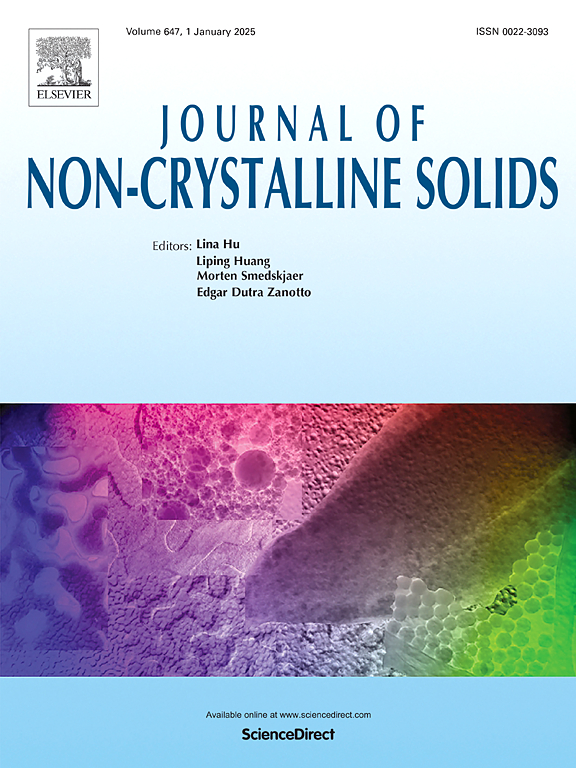亚tg热循环对CuZr金属玻璃力学性能的影响:分子动力学研究
IF 3.5
3区 材料科学
Q1 MATERIALS SCIENCE, CERAMICS
引用次数: 0
摘要
采用分子动力学模拟研究了亚tg热循环处理对Cu64Zr36金属玻璃(MG)原子结构和力学性能的影响。以不同速率快速淬火至100 K,然后在100 ~ 600 K之间进行热循环,制备MG样品。亚tg热循环导致高速率淬火样品的势能降低,表明非晶结构状态发生了改变,而低速率淬火样品的非晶结构状态保持不变。结果表明,热循环增加了材料的抗拉强度和抗剪强度。蠕变模拟显示,由于热循环,特别是对于以较高速率淬火的样品,其抗蠕变能力显著增强。此外,在高速率淬火样品的热循环过程中,观察到二十面体团簇的比例增加。热循环后的活化能分布向更高的值移动,表明原子构型更稳定,抗变形能力更强。这些发现强调了亚tg热循环对mg合金结构和力学行为的深远影响。本文章由计算机程序翻译,如有差异,请以英文原文为准。
Impact of sub-Tg thermal cycling on the mechanical properties of CuZr metallic glasses: a molecular dynamics study
The effects of sub- thermal-cycle treatment on the atomistic structure and mechanical properties of Cu64Zr36 metallic glass (MG) were studied using molecular dynamic simulations. The MG sample was prepared by rapidly quenching to 100 K with different rates, and then subjected to thermal cycling between 100 K and 600 K. The sub- thermal cycling leads to a decrease in potential energy for samples quenched with higher rates, indicating that the amorphous structural state has been altered while it remains same for samples quenched with slower rates. It was found that both tensile and shear strength increase due to thermal cycles. Creep simulations revealed a significant enhancement in creep resistance due to thermal cycles, particularly for samples quenched with higher rates. Furthermore, an increasing fraction of icosahedral clusters was observed during thermal cycles for sample quenched at higher rates. The activation energy distribution was found to shift towards higher values after thermal cycling, indicating a more stable atomic configuration and greater resistance to deformation. These findings highlight the profound impact of sub- thermal cycling on the structural and mechanical behaviours of MGs.
求助全文
通过发布文献求助,成功后即可免费获取论文全文。
去求助
来源期刊

Journal of Non-crystalline Solids
工程技术-材料科学:硅酸盐
CiteScore
6.50
自引率
11.40%
发文量
576
审稿时长
35 days
期刊介绍:
The Journal of Non-Crystalline Solids publishes review articles, research papers, and Letters to the Editor on amorphous and glassy materials, including inorganic, organic, polymeric, hybrid and metallic systems. Papers on partially glassy materials, such as glass-ceramics and glass-matrix composites, and papers involving the liquid state are also included in so far as the properties of the liquid are relevant for the formation of the solid.
In all cases the papers must demonstrate both novelty and importance to the field, by way of significant advances in understanding or application of non-crystalline solids; in the case of Letters, a compelling case must also be made for expedited handling.
 求助内容:
求助内容: 应助结果提醒方式:
应助结果提醒方式:


